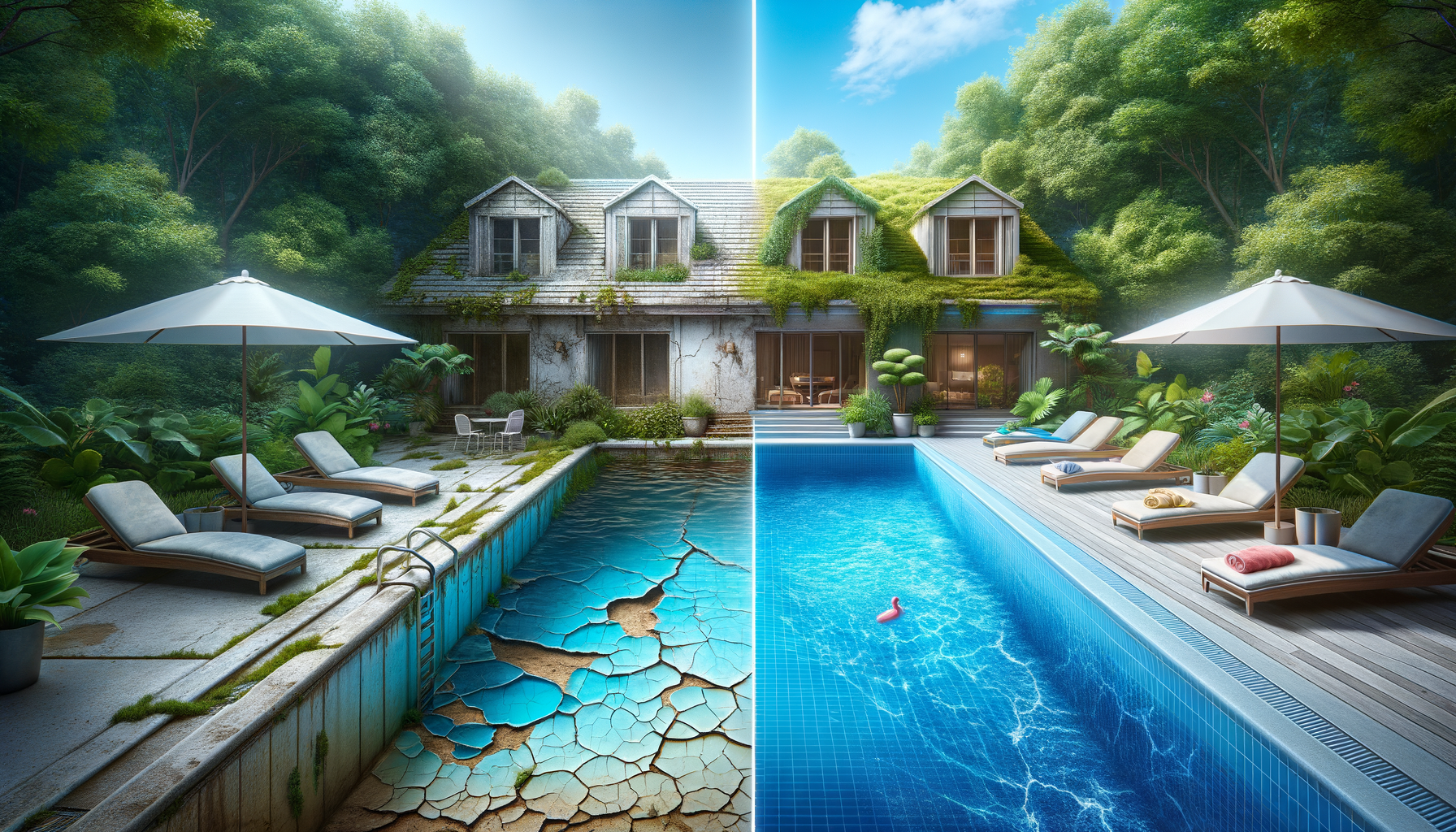Understanding the Need for Renovation
Swimming pool renovation is an essential consideration for homeowners looking to enhance their outdoor living spaces. Over time, pools can show signs of wear and tear, which not only affects their aesthetic appeal but also their functionality. Renovation is not only about restoration, but also about redefining courtyard life. By optimizing traffic flow planning and matching outdoor leisure areas or green landscapes, the swimming pool area can be upgraded to a social center for family gatherings and summer parties. Understanding the need for renovation helps homeowners decide when and how to invest in their pools.
Common signs that indicate a pool requires renovation include cracked tiles, outdated designs, and inefficient systems. These issues can lead to increased maintenance costs and decreased enjoyment. Renovating a pool can address these problems by incorporating modern designs and advanced technologies. This not only improves the pool’s appearance but also enhances its energy efficiency and safety features.
Moreover, a renovated pool can significantly increase the value of a property. Potential buyers often see a modern, well-maintained pool as a desirable feature, which can make a home more attractive on the real estate market. Therefore, understanding the need for renovation is crucial for homeowners who want to enjoy their pools to the fullest while also considering future resale value.
Choosing the Right Materials
When it comes to swimming pool renovation, selecting the right materials is a critical step. The materials chosen can affect the pool’s durability, maintenance needs, and overall aesthetic. This guide will take you to explore practical tips on material selection, cost control and style customization, so that the old swimming pool can be reborn and achieve the most worthwhile “second life” in the courtyard.
There are several material options available for pool renovation, each with its own set of benefits. For instance, fiberglass is known for its durability and low maintenance requirements, making it a popular choice for many homeowners. On the other hand, concrete offers flexibility in design, allowing for custom shapes and finishes.
Another important consideration is the pool’s lining. Vinyl liners are a cost-effective option that can be easily replaced, whereas tile offers a luxurious finish that can enhance the pool’s aesthetic appeal. Homeowners should also consider the surrounding areas, such as decking and landscaping, to ensure a cohesive look that complements the pool’s design.
Ultimately, the choice of materials should align with the homeowner’s budget, design preferences, and long-term maintenance goals. Consulting with a professional can provide valuable insights and help ensure that the renovation meets the homeowner’s expectations.
Cost Management and Budgeting
Managing costs effectively is a crucial aspect of any swimming pool renovation project. Pool renovations can range from simple upgrades to complete overhauls, and the costs can vary significantly depending on the scope of the project. Proper budgeting ensures that homeowners can achieve their renovation goals without overspending.
One of the first steps in cost management is setting a realistic budget. Homeowners should consider the current condition of their pool, the desired upgrades, and any additional features they wish to include. It’s important to factor in both the materials and labor costs, as well as any unforeseen expenses that may arise during the renovation process.
To keep costs under control, homeowners can prioritize essential upgrades and consider phasing the renovation over time. This approach allows for a gradual transformation while spreading out the financial burden. Additionally, obtaining multiple quotes from contractors can help identify the most cost-effective options.
It’s also worth exploring financing options, such as home improvement loans, to manage larger renovation projects. By carefully planning and managing costs, homeowners can achieve a successful renovation that enhances their pool area without exceeding their financial limits.
Innovative Design Ideas
Incorporating innovative design ideas can transform a swimming pool into a stunning focal point of outdoor living. With advancements in technology and design, homeowners have a wide array of options to choose from when renovating their pools.
One popular trend is the integration of smart technology, which allows for remote control of pool features such as lighting, heating, and filtration systems. This not only enhances convenience but also improves energy efficiency. Additionally, incorporating eco-friendly features, such as solar heating and energy-efficient pumps, can reduce the pool’s environmental impact.
Design-wise, infinity pools and naturalistic designs are gaining popularity. Infinity pools create a seamless visual effect that blends the pool with the surrounding landscape, while naturalistic designs incorporate elements like rocks and waterfalls to mimic a natural oasis.
Lighting is another critical aspect of pool design. LED lighting can create dramatic effects and enhance the pool’s ambiance during nighttime. Homeowners can also consider unique features such as swim-up bars, water slides, or integrated hot tubs to elevate the pool’s functionality and entertainment value.
By exploring innovative design ideas, homeowners can create a pool that not only meets their practical needs but also reflects their personal style and enhances their outdoor living experience.
Ensuring Longevity and Maintenance
Once a swimming pool renovation is complete, ensuring its longevity and ease of maintenance becomes a priority. Proper care and regular maintenance are essential to preserve the pool’s appearance and functionality over time.
One of the first steps in maintaining a renovated pool is establishing a regular cleaning routine. This includes skimming debris, brushing the pool walls, and vacuuming the pool floor. Keeping the water chemistry balanced is also crucial to prevent issues such as algae growth and equipment corrosion.
Investing in a quality pool cover can significantly reduce maintenance efforts by keeping debris out and minimizing evaporation. Additionally, regular inspections of the pool’s filtration and circulation systems can help identify and address potential issues before they become major problems.
Homeowners should also be aware of seasonal maintenance needs. For example, winterizing the pool in colder climates can prevent damage from freezing temperatures, while summer maintenance may involve more frequent cleaning and chemical adjustments due to increased usage.
By following a comprehensive maintenance plan, homeowners can ensure their renovated pool remains a beautiful and functional feature of their outdoor space for years to come.








